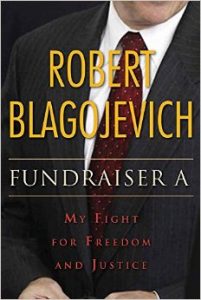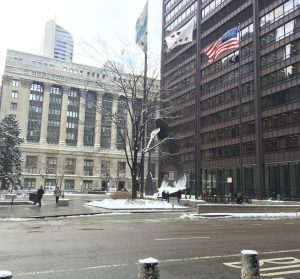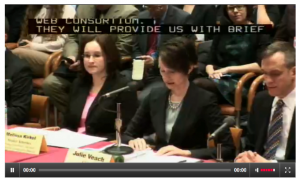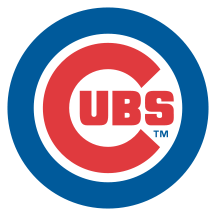Budget-conscious diners in the city aren’t normally at the vanguard of food trends. But when it comes to recession-proof eating, they lead the way – straight to the nearest BYOB.
Restaurants inviting diners to bring their own bottle, or BYOB, are gaining in appeal and growing in number. There are close to 500 restaurants listed as BYOB on various online restaurant directories; the city’s BYOB options are astounding.
Molecular gastronomy and foie gras may have garnered headlines and dining dollars in recent years, but trends are relative; they can only predict so far out into the future. After all, there were few who saw the current housing/credit/job market crash coming. So when it comes to eating out now, as with almost every other aspect of life, it’s the economy that’s influencing dining decisions. For that reason, it’s BYOB’s moment to shine.
“Obviously, the cost-saving is the main appeal,” says Sue Tomko of Chicago, who dined recently at Pizza Rustica, a favorite Wrigleyville BYOB.
Opting for BYOB isn’t just about money. It also suits Tomko’s taste. “It’s the fact that you aren’t limited to what’s on the menu – you can bring your favorite [bottle] with you. The fact that it’s now also legal to also take home whatever you don’t finish [without scoffing open container laws] makes it especially cost-effective because you’re not leaving any behind. But we never seem to have any left to take home.”
Chicago has a BYOB for just about every ethnic cuisine. Search Yelp! and similar restaurant listing pages, and you’ll find everything from Korean bbq to Moroccan to Mexican. But Asian-focused restaurants appear to be the most popular BYOB addresses.
“I don’t know what it is about Thai restaurants, in particular, but there are a lot of them that are BYOB,” says wine educator Christine Blumer. “Thai, Vietnamese and places in Chinatown. These are the restaurants that seem to dominate BYOB.”
Blumer, who runs WineDiva Enterprises in Chicago, thinks the city’s geography may play a role in making BYOBs a winning concept for restaurants. “Chicago is stereotypically a city of neighborhoods, so there certainly are a lot more neighborhood ‘joints’ that might opt for BYOB. They’re the tiny places that can afford to stay open without a liquor license.”
But BYOB is not just for the tiny curry house on the corner. It’s a feature at several local restaurants that serve more typical upscale cuisines.
Devotees of Schwa, the tiny, cultish BYOB storefront on Western Avenue, liken chef-owner Michael Carlson’s compelling, thoughtful prix fixe menus to creations served at nearby Alinea and Spain’s El Bulli.
Processco sommelier Victoria Vanourek favors a Logan Square BYOB precisely because it isn’t your average BYOB night out. “Sweets & Savories has beautiful stemware and people who know how to serve wine,” she says. “You’re going to drop a lot [for the food], so bringing favorite bottles of wine to pair with the food is an advantage.”
The Illinois Restaurant Association doesn’t keep a detailed record on the history of the BYOB concept in Chicago. It does acknowledge, however, that the city’s notoriously difficult-to-obtain liquor license has probably spurned the unprecedented number of BYOB’s that continue to open and operate in seemingly greater numbers than in New York or Los Angeles.
New York’s higher retail space rents might work against BYOBs in ways that haven’t yet affected the Chicago scene. As the WineDiva points out, “Most restaurants make their margin on booze, so a lot of places in New York or L.A. may need to keep liquor [on the menu] in order to meet those costs.”
Vanourek sees Chicago’s BYOB scene as a step in the evolution of a young or breakout chef-owner. “There are many of new restaurant owners that worked under famous chefs here in the city or were line cooks at big restaurants that can’t afford the liability, the dram shop insurance when they open a place of their own.”
Both Vanourek and Blumer note the BYOB trend growing at places that have liquor licenses.
“I was just at Socca for their BYOB night last Monday, and I appreciated the fact that I could bring my own bottle and not have to pay the corkage fee,” says Vanourek.
“That [BYOB] option can really drive business on typically ‘off’ nights for restaurants,” adds Blumer.
Restaurants carrying liquor licenses would normally charge a corkage fee for the privilege of opening your favorite bottle – so long as that bottle isn’t featured on their own wine list. In that case, you’ll most likely be asked to purchase it from their menu.
BYOBs, on the other hand, are – by law – not allowed to charge you for opening your bottle, although this practice does happen, even to sommeliers.
“There’s a favorite BYOB of mine – that I won’t name – that has charged me a corkage fee several times,” says Vanourek. She’s let it slide, but, “I’m thinking about bringing in a copy of the law the next time it happens.”
BYOBs may be slow to catch on outside of Chicago as various open container laws prohibit the practice. But trends start somewhere, and Chicago’s BYOBs haven’t gone unnoticed by top-rated publications like Zagat Guides and Food & Wine magazine.
“It’s just a great benefit all the way around – in price and choice,” says Sue Tomko.
If the city’s BYOB scene is any indication, the trend will thrive nationally even after housing prices rebound.










Be First to Comment